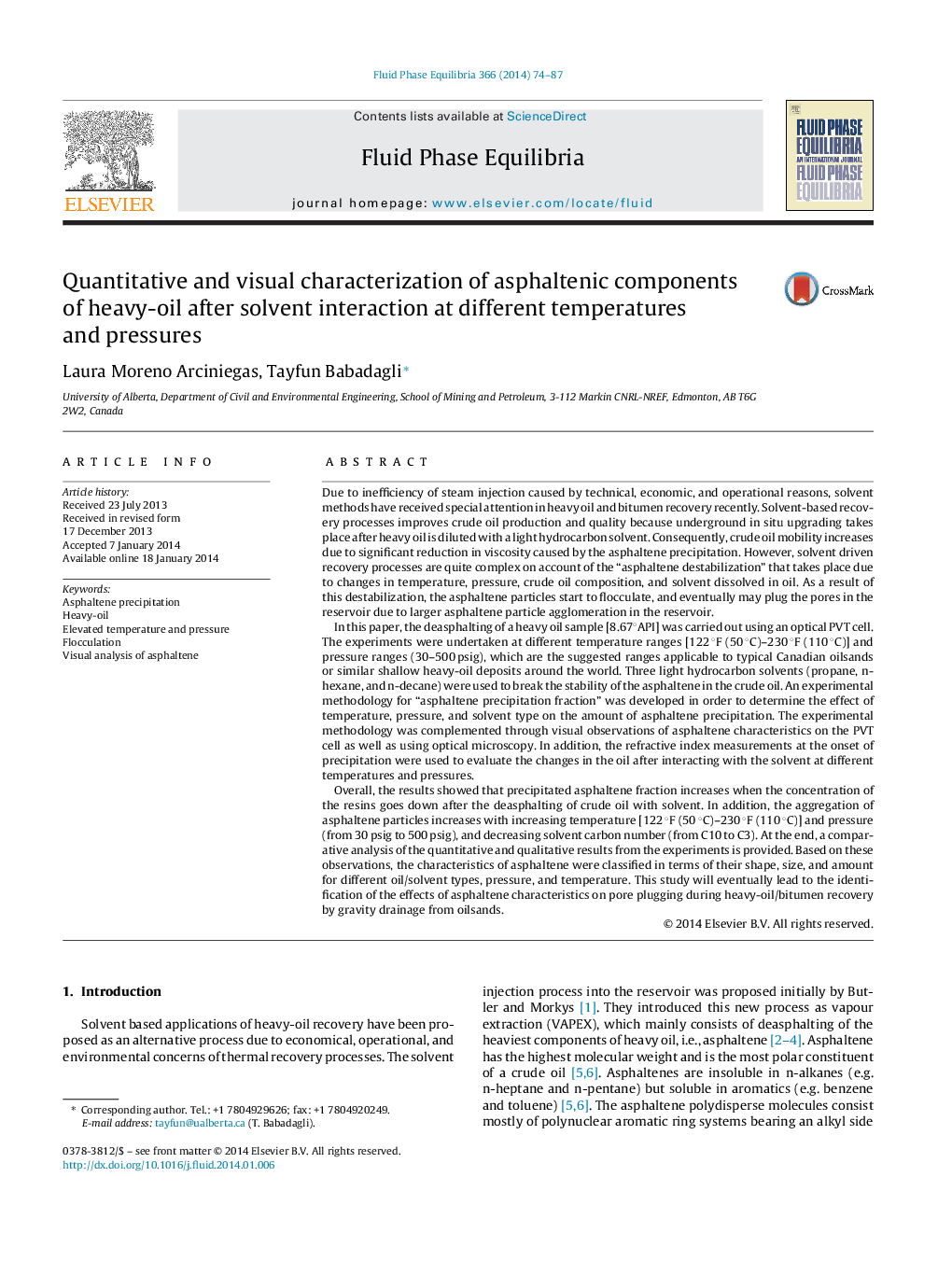| کد مقاله | کد نشریه | سال انتشار | مقاله انگلیسی | نسخه تمام متن |
|---|---|---|---|---|
| 202700 | 460617 | 2014 | 14 صفحه PDF | دانلود رایگان |
Due to inefficiency of steam injection caused by technical, economic, and operational reasons, solvent methods have received special attention in heavy oil and bitumen recovery recently. Solvent-based recovery processes improves crude oil production and quality because underground in situ upgrading takes place after heavy oil is diluted with a light hydrocarbon solvent. Consequently, crude oil mobility increases due to significant reduction in viscosity caused by the asphaltene precipitation. However, solvent driven recovery processes are quite complex on account of the “asphaltene destabilization” that takes place due to changes in temperature, pressure, crude oil composition, and solvent dissolved in oil. As a result of this destabilization, the asphaltene particles start to flocculate, and eventually may plug the pores in the reservoir due to larger asphaltene particle agglomeration in the reservoir.In this paper, the deasphalting of a heavy oil sample [8.67°API] was carried out using an optical PVT cell. The experiments were undertaken at different temperature ranges [122 °F (50 °C)–230 °F (110 °C)] and pressure ranges (30–500 psig), which are the suggested ranges applicable to typical Canadian oilsands or similar shallow heavy-oil deposits around the world. Three light hydrocarbon solvents (propane, n-hexane, and n-decane) were used to break the stability of the asphaltene in the crude oil. An experimental methodology for “asphaltene precipitation fraction” was developed in order to determine the effect of temperature, pressure, and solvent type on the amount of asphaltene precipitation. The experimental methodology was complemented through visual observations of asphaltene characteristics on the PVT cell as well as using optical microscopy. In addition, the refractive index measurements at the onset of precipitation were used to evaluate the changes in the oil after interacting with the solvent at different temperatures and pressures.Overall, the results showed that precipitated asphaltene fraction increases when the concentration of the resins goes down after the deasphalting of crude oil with solvent. In addition, the aggregation of asphaltene particles increases with increasing temperature [122 °F (50 °C)–230 °F (110 °C)] and pressure (from 30 psig to 500 psig), and decreasing solvent carbon number (from C10 to C3). At the end, a comparative analysis of the quantitative and qualitative results from the experiments is provided. Based on these observations, the characteristics of asphaltene were classified in terms of their shape, size, and amount for different oil/solvent types, pressure, and temperature. This study will eventually lead to the identification of the effects of asphaltene characteristics on pore plugging during heavy-oil/bitumen recovery by gravity drainage from oilsands.
Journal: Fluid Phase Equilibria - Volume 366, 25 March 2014, Pages 74–87
